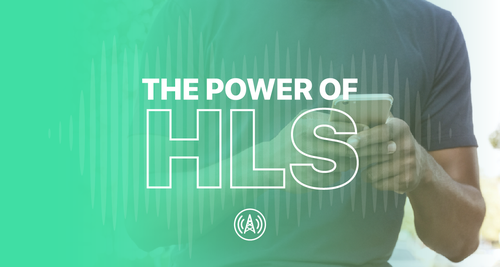

The Power Of HLS
Almost all of us are familiar with the video streaming services such as Netflix, Disney+ and HBO Max. They have ushered in a new era of content, but to do it reliably and provide the best user experience, video streaming platforms have turned to a protocol developed by Apple back in 2009.
In this article, we'll explore the history of HLS and why it’s become the standard for streaming video, and why Radio Mast chose to harness HLS for streaming audio.
The History Of HLS
Apple originally released HLS in 2009 after the first two generations of iPhone had issues accessing video content when switching between Wi-Fi and mobile networks. At the time, most smartphones were using Quicktime or Adobe Flash for streaming video. These protocols had trouble traversing firewalls, high battery usage, and struggled over congested mobile networks.
Apple went to work on developing HTTP Live Streaming (HLS) to address these issues and as of 2019, an annual video industry survey found HLS to be the most popular video streaming format.
A Better Experience
When video streaming started to become available to the masses, the obvious choice for stability was to use an adaptive streaming protocol like HLS because of its improvement on video playback.
HLS and similar protocols also allow for video to be available at multiple bitrates to seamlessly transition to a lower bitrate when network bandwidth is reduced.
On a fundamental level, HLS works by splitting an audio or video stream into segments, which are usually a few seconds in length, and then serving these segments as files over HTTP/HTTPS. The list of available segments is published in a playlist file (.m3u8), which contains a URL for each recent segment. When a player plays an HLS stream, it reads this playlist file every few seconds and continually downloads all available segments, then stitches them back together into a continuous audio or video stream.
The benefits are obvious - less interruptions for the viewer or listener, fewer dropped streams, and an overall confidence in the platform.
User experience is key when providing content, and HLS improves that experience especially on mobile devices.
Why Radio Mast Offers HLS
It’s not common in audio streaming that platforms offer HLS, but that hasn’t stopped us from integrating it into Radio Mast.
Our goal is to provide you with the best tools to serve your listeners, and the integration of HLS to improve the mobile listening experience was a natural next step.
HLS streams provide enhanced stability for mobile listeners, reduced battery usage, and are seamlessly integrated with Radio Mast Analytics and listener statistics. Best of all, all AAC & MP3 streams on Radio Mast are now upgraded to be HLS-enabled, with no additional cost or reconfiguration involved for broadcasters.
Radio Mast provides a cost-effective upgrade path for radio broadcasters looking to upgrade from Icecast or Shoutcast to an HLS-enabled stream. Simply connect your existing streaming audio encoder to Radio Mast, and your stream will be available as HLS.
This is an article in our series on HLS for Audio. Learn more about HLS in these articles:
- Introducing HLS for Audio
- Read more technical details on HLS in our platform documentation
- Read more about the Radio Mast Streaming Network
- Try listening to some sample HLS audio streams
References: